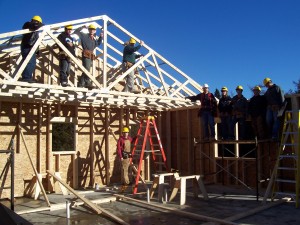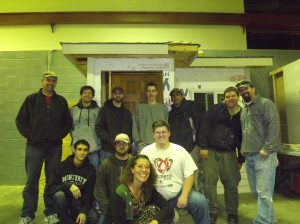 CareerSafe was founded in 2003 under the core belief that no job is worth a young worker’s life. CareerSafe has expanded their focus to include the whole worker. From safety and health training to employability skills and cybersecurity awareness, CareerSafe is focused on providing the foundational skills workers need to launch successful careers.
CareerSafe was founded in 2003 under the core belief that no job is worth a young worker’s life. CareerSafe has expanded their focus to include the whole worker. From safety and health training to employability skills and cybersecurity awareness, CareerSafe is focused on providing the foundational skills workers need to launch successful careers.
Starting with Safety
A first step of safety training can occur as soon as middle school or freshman year, with CareerSafe’s StartSafe program. A site-license specific training will provide five (5) hours of core content, as well as the opportunity to explore additional pathways. StartSafe is the perfect introduction to OSHA and workplace safety, covering topics such as:
- Personal Protective Equipment (PPE)
- Walking-Working Surfaces
- Bloodborne Pathogens
- Electrocution Hazards
- Workplace Violence
OSHA 10-Hour Training
The next obvious step in each learner’s safety training is OSHA 10-Hour Training in either General Industry or in Construction with several industry-specific pathways including:
- Healthcare
- Public Safety
- Agriculture
- Automotive
- Cosmetology
- Culinary
- Manufacturing
- Veterinary
OSHA 10-Hour training is purchase per seat and registered through the U.S. Department of Labor, granting each student a recognized OSHA General or Construction Industry card.
Cyber Safety Awareness
Technological advances have made the digital world an integral part of everyday life. Unfortunately, that means online risks for young people are also becoming more prevalent. The CareerSafe Cyber Safety Awareness Library contains courses with grade-level focused topics for 6th-12th grades and covers situations like cyberbullying, sexting, and the consequences of school threats. This is a site license program as well.
Employability Skills
The final step on preparing learners for workplace readiness is the CareerSafe library of Employability skills.
These courses are available per seat or by site license and they provide quality resources and techniques for building essential skills and strategies applicable in all professional fields. Topics include:
- Written communication
- Cybersecurity essentials for work
- Interview skills
- Critical thinking
- Communication skills
- Time management
- Teamwork
- Personal financial management
- Materials management
When you add in CareerSafe’s best-of-class customer service, innovative online curriculum, and effective teacher tools, there are numerous ways to educate your learners.
By offering the whole suite of CareerSafe products, from StartSafe to OSHA 10-hour training, cyber security training to employability skills, the result is a well-rounded, educated young worker who is capable of staying safe in the workplace.
Scaling Across Your State
CareerSafe believes that all students deserve the right to a safe and fair workplace. What better way to prepare your students to remain safe in the workplace than to equip them with the knowledge and understanding of OSHA safety training while still in high school. Because our courses easily integrate within your teacher’s existing CTE curriculum and are created to align with the National Career Clusters Framework this opportunity allows for states to scale this course across all pathways for every student. We have Account Executives available across the country to walk you through how to get set up today. Let us help you set your students on a path to success.
Sherry Pruitt, Executive Director of CareerSafe
Sherry.Pruitt@careersafeonline.com
888-614-7233







